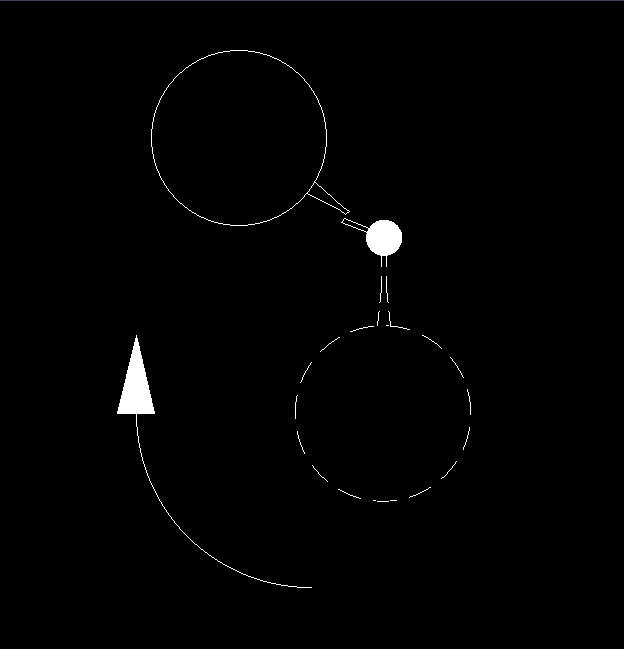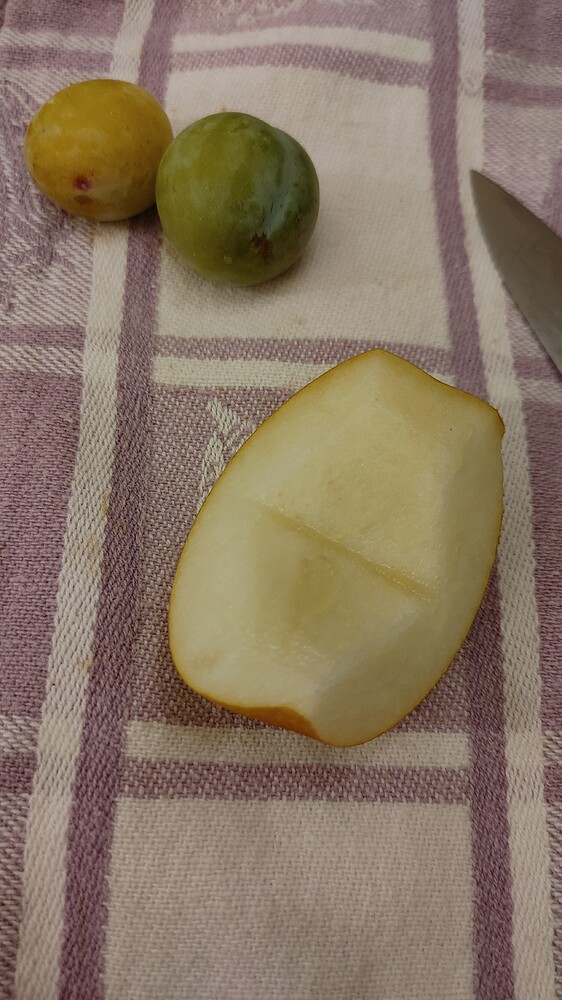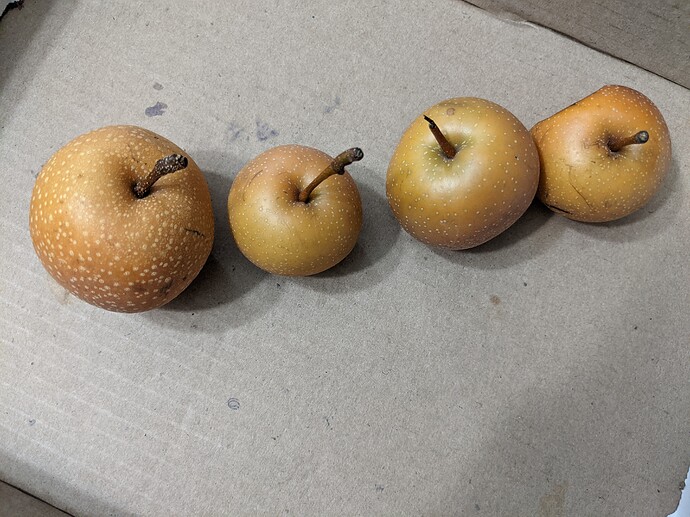Well I hope my good report continues in the coming years. .
I have a dozen little shinkos trees , yet to bear , as I said I have only sampled one. Hardly a just sample
If you go to a Korean supermarket or Hmart, the huge , over a pound each pear sold in boxes mostly are Shingo pear. , .very good flavors
Did you succeed in getting scions of Zao Su Li I sent you to take? It’s supposed to be a Chinese white pear hybrid. Not sure how early it is relative to other pears even though it has that in the name. I lost track of my graft so I’m regrafting it this year.
I have a rather large tree of Drippin Honey so there will be plenty of “samples” if things go well this year. Check the Asian store for Shin Li pears in the fall. They are very good. I think i might have sent you scions of that one before too.
I think Singo is the same as Niitaka. The ones here are often very watered down unfortunately.
I think both grafts took but I need to find out which pear trees I grafted them on 
You probably are right. They do look alike.
Have had Shinko & Niitaka for 25 years. They are not the same.
Shinko, big green/brown russetted pear. Niitaka, small golden pear…needs thinning…so mine are rarely much bigger than golfballs
We were talking about Singo/ Shingo and Niitaka. I am aware that Shinko is a distinct pear. The names are superficially similar but I’m pretty sure they describe different varieties.
I have a couple of hosui samples and a chojuro… How can I tell if the chojuro and hosui pear is fully ripe? I don’t care as much for the crunch as i do for the full flavor. I’ve already tested one sample of hosui but I’m guessing that wasn’t fully ripe given it had some astringency left near the skin. I only have one sample of chojuro so i cannot afford to open it too early.
If the seeds are dark brown or black, they are ripe. When ripened, you can easily pick them as their stems separate readily from the branch.
Asian pears’s taste and texture is not the same as Euro pears. Crunchiness/crispness is part of Asian’s attractive feature.
I usually peel russeted-skin Asian pears as some have rough skin texture that is not pleasant.
I eat thin-skinned yellow Asian pears without peeling.
I love eating russeted apples with skin on. That russeted skin provides nice texture and flavor.
It’s not easy for me to judge when the Chojuro are ripe, I use some trial and error.
But they do get more golden and luminous when fully ripe. If you can feel some slight give near the stem end, it is probably ripe, or overripe. No hint of green on skin, more golden than brown is the best I can say from memory.
I picked one yesterday that was almost ripe. Sweet, but still pretty hard and a little starchy. But starting to have flavor.
I’m in a similar boat with my Hosui, only a few fruit set this year. Here’s one I picked yesterday, haven’t tasted yet, but have high hopes:
Just ate this Hosui. Delicious. 16 brix with some tang. Good even after eating 30 brix green gages.
@murky can you distinguish the chojuro vs hosui here? I was given the samples but don’t remember which was the chojuro but i think it’s the largest one…
My guess, left one is hosui, the rest are chojuro
@tubig —> To tell if they’re ripe or not, I rotate the pear around the branch a little more than 90 degrees. If they’re ripe, the stem usually snaps. If the stem doesn’t snap, I leave it go for a few more days.
I’d have to go look at my tree side by side, but they are very similar.
That would be my first guess too, if nothing else, for me Hosui sets sparser and has larger fruit (maybe because I don’t properly thin my Chojuro).
From the picture, the left most fruit, aside from being bigger, has larger lenticels. Its not easy to tell from the picture, but looks lke the stem is spotted too, unlike the others.
My Hosui ripened a little ahead of the Chojuro, and the one on the left seems to have the least green tint to the skin.
They both have butterscotch flavor, but I think Hosui has more acid.
I’ve only tasted one of each so far this year. I’m going from memory here.
@murky i take it as long as there’s a bit of a greenish tint on the.skin,.it’s not fully ripened?
Which of the two trees have darker branches?
The only difficult pest this year has been excessive rain which means my Korean Giant pear tree is loaded with sound fruit and not the usual riddling from stink bugs and coddling moth damage.
The difficulty with getting really good Asian pears in the NE is all about brix. Korean Giant has more capacity to produce high numbers than any other I’ve grown and one that ripens to golden while there’s still leaves on the tree can be a treat, although one I tire of quickly. I don’t know why either because I love Kaki persimmons which are also nothing but crunch and sugar (non-astringent types, at least). KG’s also have a lot of juice which you’d think would make it more appealing.
No accounting for taste, sometimes. When I was younger I loved them.
It is hard to ID a cultivar by a picture especially two looks similar in color , size, and ripen window. Hosui in my yard ripens a little earlier than chojuro too. But those in shade can overlap quite a bit. I still have few chojuro that are in shaded part of the tree are not ripe yet.
I think that’s probably true from my limited experience.


